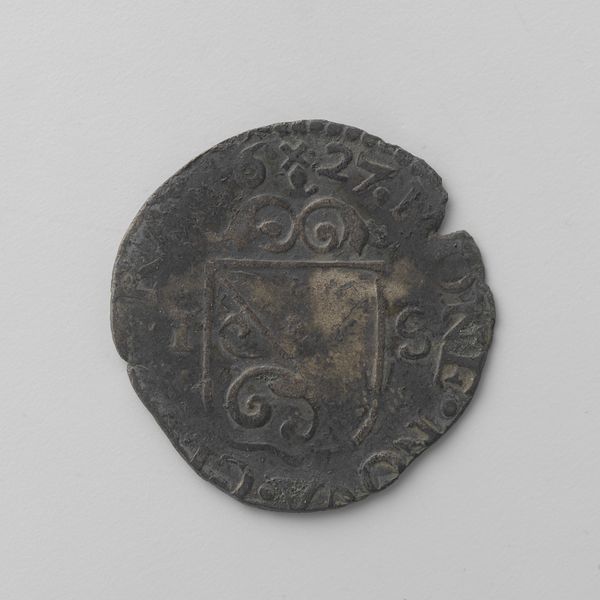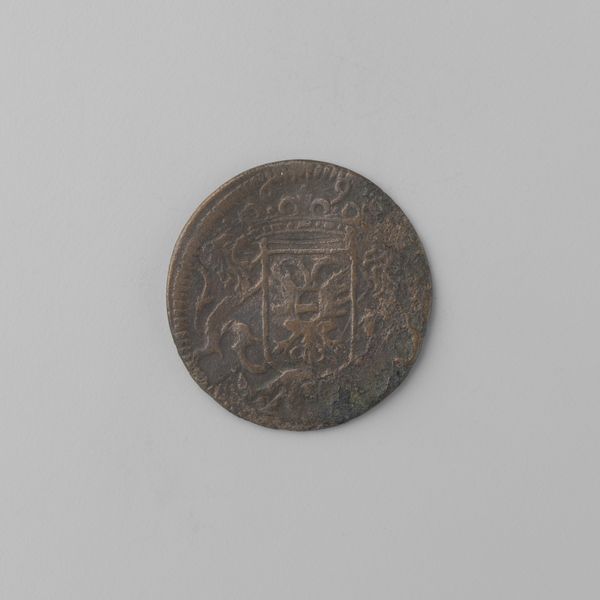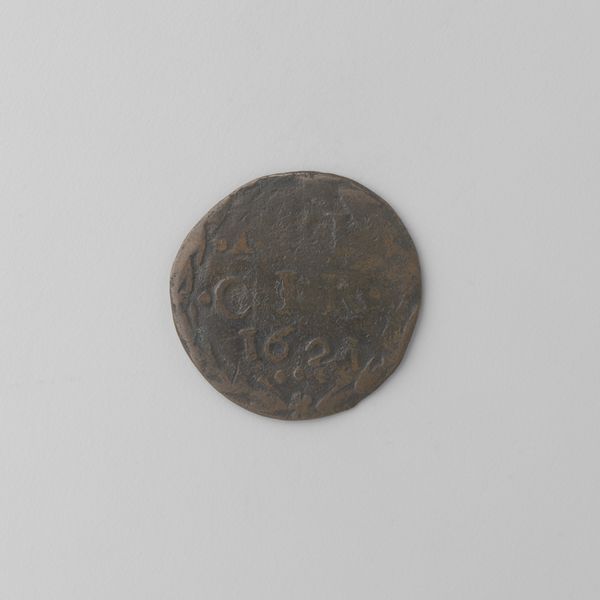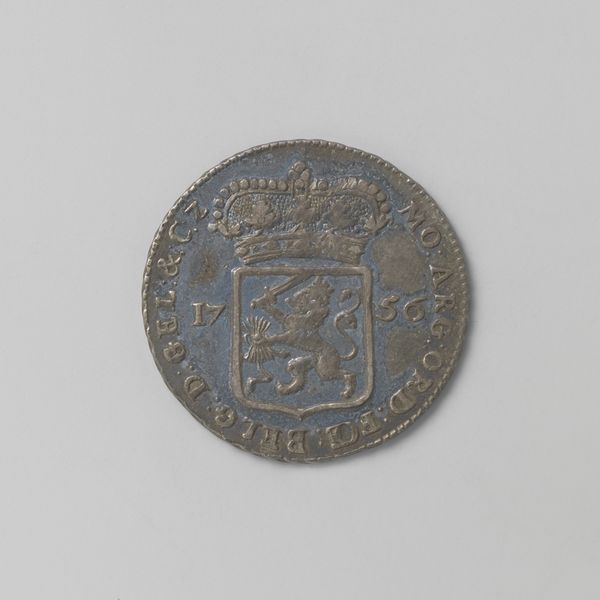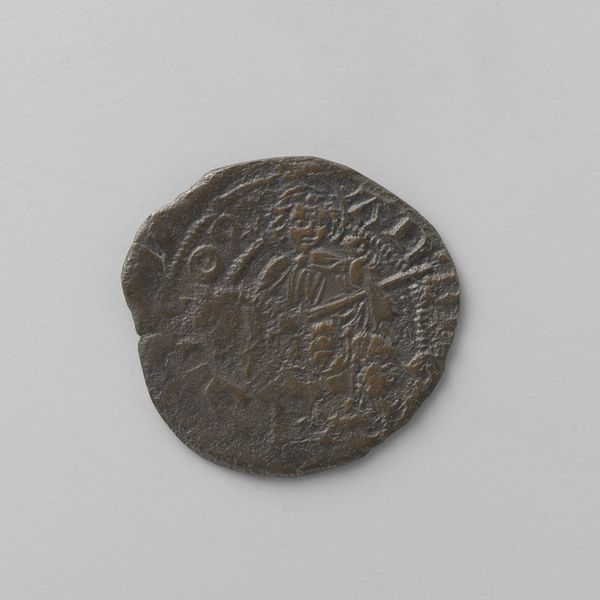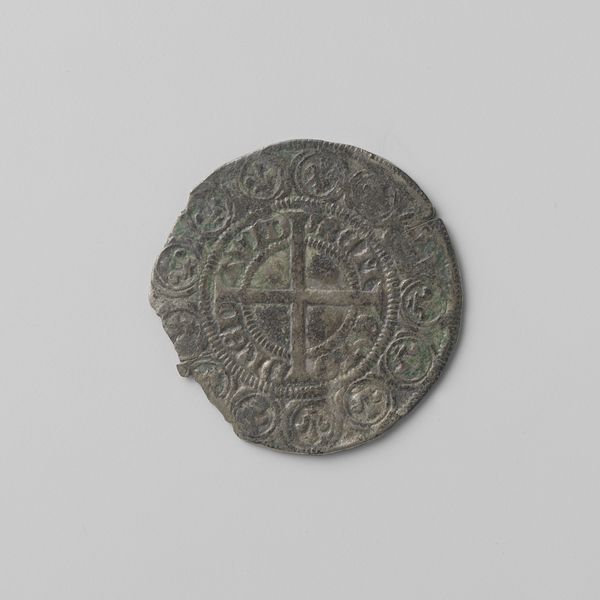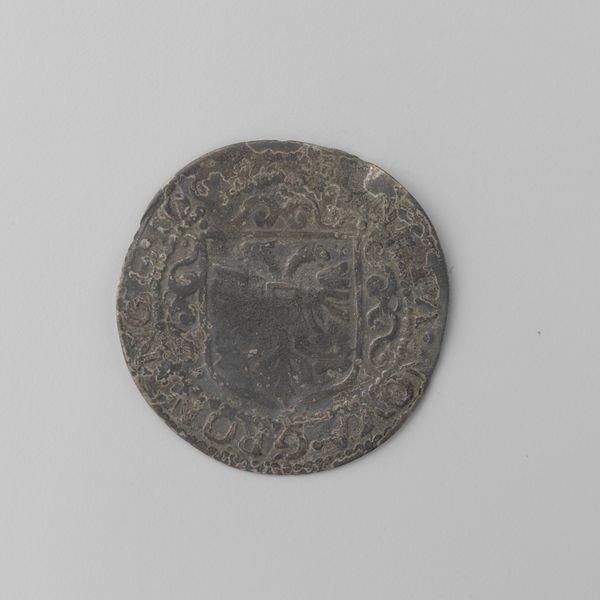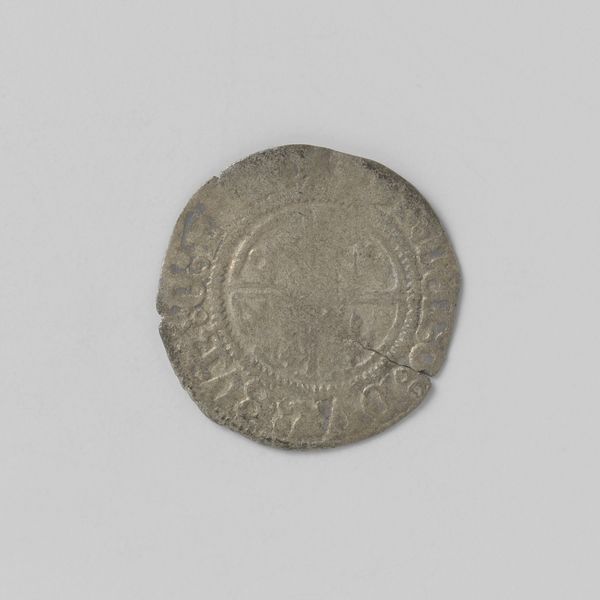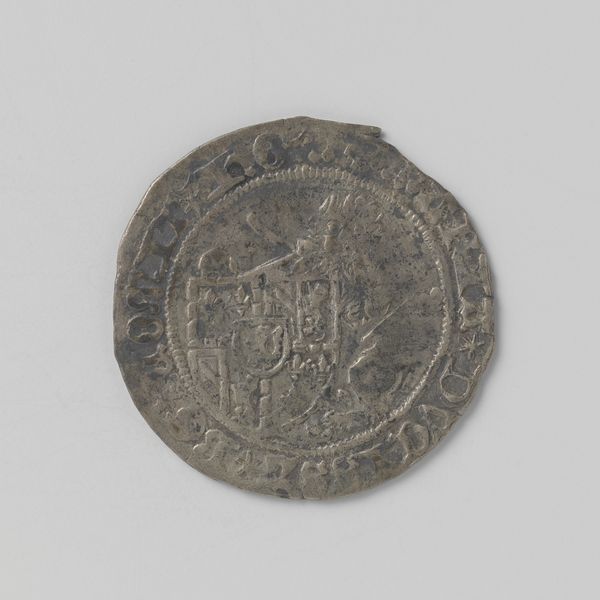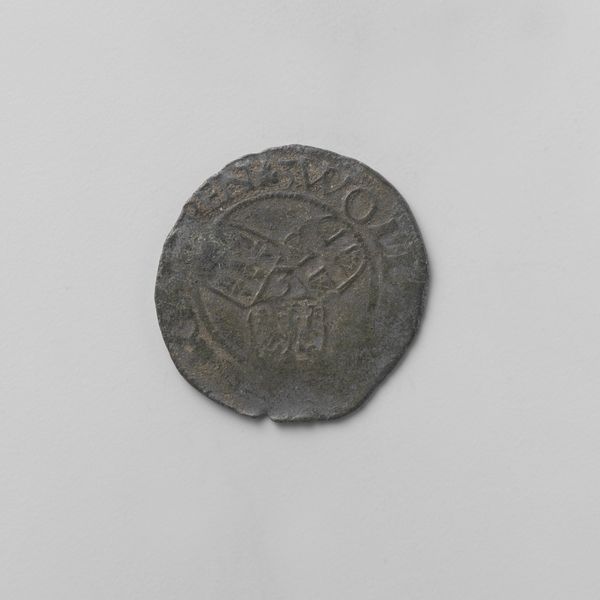
print, metal, relief
# print
#
metal
#
relief
#
11_renaissance
#
geometric
#
ancient-mediterranean
#
ceramic
#
decorative-art
Dimensions: diameter 2.3 cm, weight 1.90 gr
Copyright: Rijks Museum: Open Domain
Curator: This fascinating metal relief is titled "Oord van de stad Utrecht op naam van Philips II, 1579," dating back to 1579. It provides us a small window into the history of the city of Utrecht under Phillip II. Editor: My first impression is of something worn, carrying immense history. The relief's circular format focuses the eye, even though the surface seems quite distressed; this accentuates the depth, materiality, and contrast that invite deeper looking. Curator: The image certainly holds layers of symbolic importance. The central element, the shield, carries the emblems representing the city and presumably acknowledging Phillip II. It represents not only civic identity but allegiance. Editor: Agreed. Compositionally, the use of concentric circles is key. The inner circle defined by the shield versus the outer by what appears to be floral or foliate shapes, could be seen as framing the more structured heraldic symbol. The degradation around the perimeter interestingly subverts a perfect symbolic reading. It hints at imperfection or disruption. Curator: Exactly! This juxtaposition speaks volumes about the socio-political situation in 1579. It can be inferred that, beneath formal declarations of allegiance and peace, existed fracture, uncertainty, and, perhaps, a struggle to preserve civic identity. Think about the visual language—the shield as protector, now undermined by surrounding decay, indicating political instability. Editor: The textural quality—the abrasions, irregularities—it's all quite arresting. The artist has worked wonderfully with metal, creating an interesting, almost unsettling visual dynamic and a kind of meta-commentary between subject and process, representation and the thing itself. Curator: For me, the artifact as a whole echoes humanity's penchant for imposing order during chaos; the shield's promise clashes with reality. I wonder how residents viewed Phillip II during this tumultuous time, clinging to familiar symbols, and their emotional connection toward an ideal. Editor: On closer inspection, the design rewards contemplation and offers layers of depth as form and texture complement iconographical intent. Curator: Absolutely. History comes alive not just from events but through symbols etched into material. It allows us insight into past emotional and ideological worlds.
Comments
No comments
Be the first to comment and join the conversation on the ultimate creative platform.
